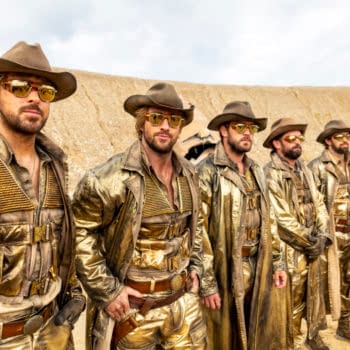Posted in: Movies, Recent Updates, Video Games | Tagged: Anima: Beyond Fantasy, Anima: Gate of Memories, entertainment, Fallout: Las Vegas, kickstarter, Neverwinter Nights, Obsidian Entertainment, pc, Pillars of Eternity, Planescape: Torment, rpg, video games
Anima: Gate Of Memories And The Problem With Kickstarter
By Sage Ashford
Since Kickstarter began, both veteran and newbie developers alike have been making proposals in an attempt to get gamers to fund their dream project. Some are incredible success stories, others…not so much. Likewise, fan reception has had an equally polarizing range. There are those who have been elated to learn their favorite developer is now able to unleash their imagination free of any kind of restraint from publishers to make it "more accessible", or be forced to strip out features to reach deadlines that were unrealistic in the first place. That they get to help is a bonus–the proverbial cherry on top of the sundae. Others find Kickstarter untrustworthy, or believe it's a "charity" and that if a developer wants money that going to a publisher is exactly what they should do.
In my case, I've always taken a neutral view on Kickstarter's existence, as I tend to do with most things that don't affect me, and don't seem to be having a negative effect on anyone else. I do think that anything that allows more creative freedom is a good thing, but there's no gaming developer that I'm so smitten with that I would follow them to whatever they do. And while I've nothing against Kickstarter games in and of themselves, many of them tend to be throwbacks to older eras I don't care to revisit. In my opinion, technology of all things should be primarily about progression. As such, I've always viewed 2D and 8/16-bit sprites as technological limitations, rather than a design choice. And since many Kickstarter titles tend to approach game design from the exact opposite perspective, I've simply kept my distance.
Still, there are some titles that do catch my attention, like Anima: Gate of Memories. Based on a series of roleplaying books called Anima: Beyond Fantasy, Gate of Memories is a third-person action RPG that looks like what I initially hoped an independently developed RPG would look like. The game certainly won't be pushing any decent gaming PC or even a next-generation console to its limits, but it still features a wide variety of hauntingly beautiful locales to explore. It's also meant to have a lengthy story, filled with choices that will influence a player's game over time, a skill tree to allow players to customize the fighting style according to their own play style, as well as featuring puzzles and the ability to play stealthily rather than simply brute force your way through every encounter.
The developers recently released a game play trailer that, while certainly rough around the edges, I thought looked very good:
[youtube]http://youtu.be/3A2lHo4rNmM[/youtube]
My only problem with the trailer is that it accompanies a second Kickstarter. Fortunately, it seems as if the project itself is on track and this second Kickstarter is merely to see if they can add a few things–such as full voicing, additional game content, and confirmation at being ported to next-generation consoles.
But see…therein highlights my problem with video game Kickstarters. While I hope they do reach the roughly $50,000 needed to confirm a release for the PS4, this is something I see too often. While many non game projects will often have stretch goals that add something unique or fun but in the end not terribly important, video game Kickstarters are different.
Take Pillars of Eternity. A massively successful Kickstarter by the good people at Obsidian Entertainment, who are known for classic RPGs like Planescape: Torment and Neverwinter Nights, as well as the one of the more popular games from this last generation, Fallout: New Vegas. With Pillars, Obsidian set out to create an isometric RPG in the vein of many of their older hits, and asked for a comparatively (to other Kickstarted games) high initial fee of $1.1 million dollars. When they reached that goal in a matter of hours, they set additional goals–but not one of them felt extraneous, the way countless downloadable content items tend to feel in "officially published" titles. They all felt as if they should have always been a part of the game's content.
And Kickstarter is littered with games that have the same problem: where the "stretch goals" are in fact just adding back elements that probably should never have been taken out. But I don't blame Obsidian, nor do I blame the good people behind Anima. Sure, while there's a good chance you know what the "full" game would cost–gamers are simply more likely to pledge to a game they think has a good chance of getting made. And the less that game costs, the more they believe the goal is actually attainable. Of course, gamers aren't much to blame either–after all, it's not as if they receive a share of the profit. It's just another sign that, whether you go high-profile or independent, managing the budget has become more important than ever as a game developer.
If you liked what you saw of Anima: Gate of Memories, check out their second Kickstarter here.
Sage Ashford is a college kid with far more hobbies than he has free time. You can find him on Twitter @SageShinigami, but also at his own blog Jumping in Headfirst.















